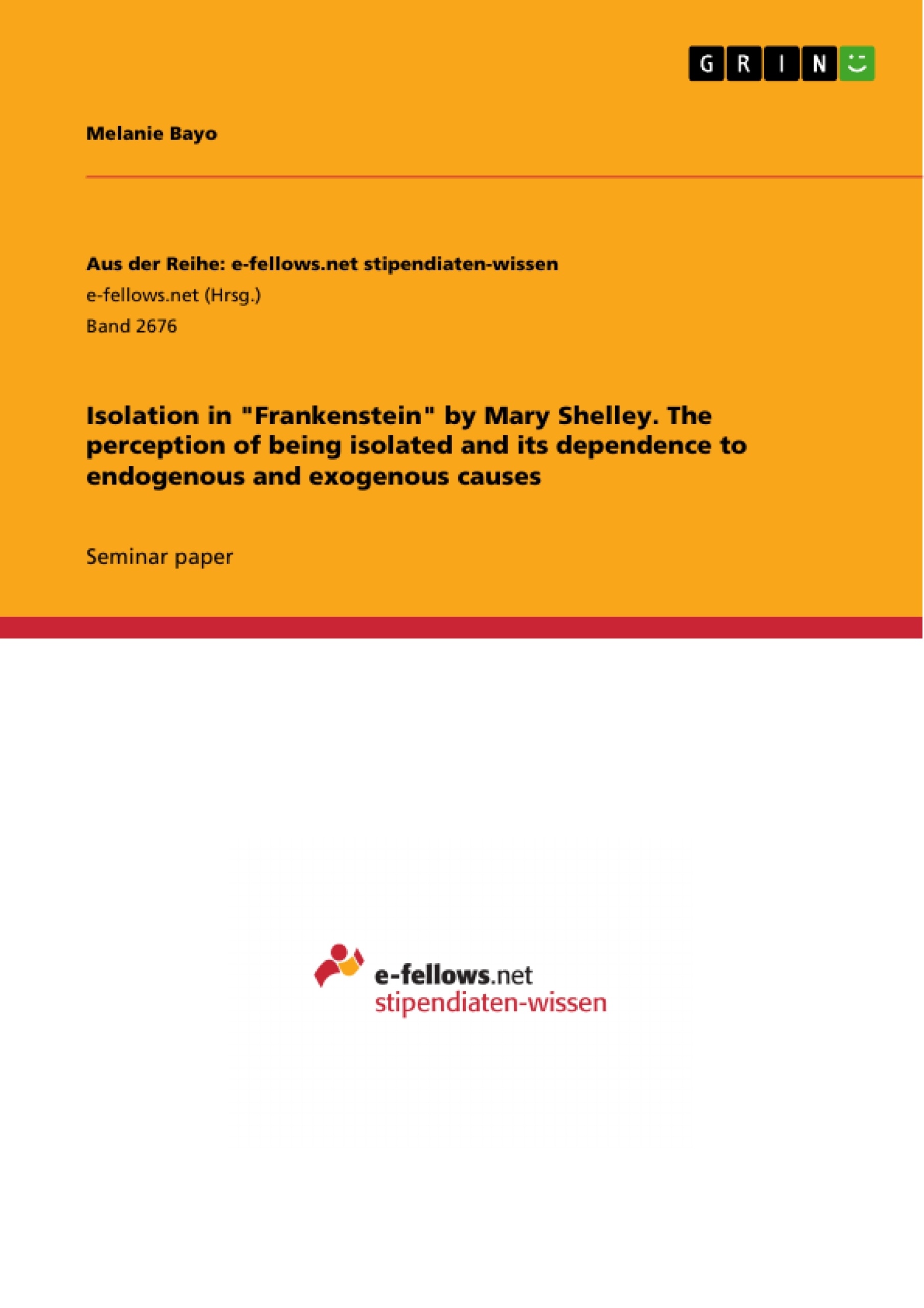In Mary Shelley's "Frankenstein" Victor Frankenstein experiences self-inflicted seclusion which leads him to depression and further isolates him, whereas the creature suffers from exogenous caused isolation which ends in furiousness and grievance. The aim of this paper is to analyse the characters’ respective perceptions and handlings of isolation and to put them into dependence to endogenous and exogenous causes to prove if
the types of causes truly have an impact.
Based on the working definition of isolation for this research paper, the development of isolation will be outlined by identifying inducing incidents and processes. It will be pointed out how the characters respond to their isolation. The examination will proceed chronologically and is structured in certain life phases, so that causes such as certain occasions which set in during the development can be emphasized. Afterwards the respective
perception and handling of isolation will be compared.
Table of Contents
- Introduction
- Definition of isolation
- Cause and development of Victor Frankenstein's isolation
- Victor Frankenstein's life before creating the creature
- Victor Frankenstein while creating the creature
- Victor Frankenstein's life between the creature's "birth" and the first conversation with the creature
- Volume III
- Cause and development of the creature's isolation
- The creature's life until it meets Victor Frankenstein
- Volume III
- Comparison of both ways of isolation
- Conclusion
- Bibliography
Objectives and Key Themes
This research paper examines the perception and handling of isolation in Mary Shelley's "Frankenstein," focusing on Victor Frankenstein and the creature. It aims to analyze their individual experiences and reactions to isolation, attributing them to endogenous and exogenous causes. The paper investigates whether these different causes truly impact the characters' experiences.
- The impact of isolation on the characters' mental and emotional states
- The role of endogenous and exogenous causes in shaping isolation
- The contrasting ways in which Victor Frankenstein and the creature deal with isolation
- The implications of isolation for the characters' relationships with others
- The connection between isolation and the concept of "monstrosity" in the novel
Chapter Summaries
The introduction establishes the focus of the paper, outlining the central theme of isolation in "Frankenstein" and its impact on the characters. It highlights the contrasting experiences of Victor Frankenstein and the creature, emphasizing the importance of endogenous and exogenous causes.
Chapter two provides a definition of social isolation, encompassing its various aspects, including the lack of relationships, psychological barriers, and physical barriers. The chapter emphasizes the role of alienation and the individual's perception of belonging in the experience of isolation.
Chapter three delves into the cause and development of Victor Frankenstein's isolation, tracing his experience through different life phases. The chapter examines his harmonious early life, his growing interest in natural science, and the impact of his creation on his mental and emotional state. It explores his feelings of isolation, depression, and withdrawal from friends and family.
Chapter four explores the cause and development of the creature's isolation, focusing on its unique experience of being ostracized and rejected due to its appearance. The chapter examines the creature's loneliness, its attempts to connect with others, and its eventual descent into anger and violence.
Chapter five compares the different ways in which Victor Frankenstein and the creature experience and handle isolation. It analyzes the similarities and differences between their experiences, highlighting the role of their respective causes.
Keywords
Isolation, endogenous and exogenous causes, "Frankenstein," Victor Frankenstein, creature, perception of isolation, handling of isolation, alienation, monstrosity, social isolation, psychological barriers, relationships, family, friends, mental and emotional states, depression, anger, violence, rejection, connection, belonging.
- Quote paper
- Melanie Bayo (Author), 2016, Isolation in "Frankenstein" by Mary Shelley. The perception of being isolated and its dependence to endogenous and exogenous causes, Munich, GRIN Verlag, https://www.grin.com/document/412546




